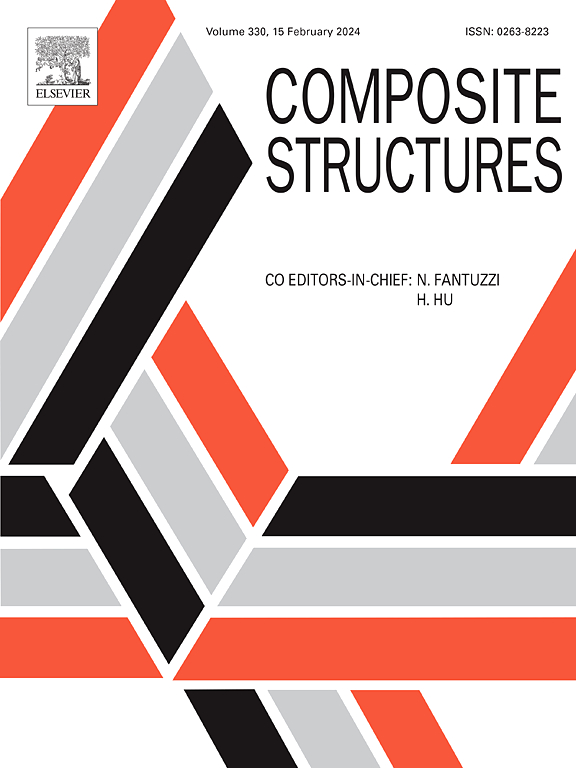带状修复层合板固化残余应力的数值分析
IF 7.1
2区 材料科学
Q1 MATERIALS SCIENCE, COMPOSITES
引用次数: 0
摘要
在目前的飞机复合材料结构修复技术中,利用真空袋固化技术进行复合材料贴片切屑修复被认为是一种兼顾效率和可靠性的修复方法。在复合材料贴片的成型过程中,贴片会产生工艺应力。残余过程应力的确定是修复过程建模的首要任务。为了实现这一目标,开发了一个数值模拟框架来模拟复合材料贴片固化过程中围巾修复结构中产生的固化变形和残余应力。该框架包含了修复过程中的固化反应、树脂模量变化和体积变化。随后,分析了修复后结构的过程应力和变形分布。最后,探讨了不同升温速率和最高固化温度对固化变形和残余应力的影响。结果表明,提高固化温度和升温速度可以缩短修复时间,但代价是增加修复结构的残余应力。本文章由计算机程序翻译,如有差异,请以英文原文为准。
Numerical analysis of curing residual stresses in scarf-repaired laminates
Among the current repair technologies for aircraft composite structures, scarfed repair with composite patches using vacuum bag curing technology is considered to be a repair method that takes both efficiency and reliability into account. During the molding process of composite material patches, process stresses arise in the patch. Determination of residual process stresses is a primary task for the modeling of the repair process. To achieve this objective, a numerical simulation framework is developed to model the curing deformation and residual stresses that arise in the scarf-repaired structure during the composite patch curing process. The framework incorporates the curing reaction, resin modulus variation, and volume changes during the repair process. Subsequently, the distribution of process-induced stress and deformation in repaired structures were analyzed. Finally, the effects of different heating rates and maximum curing temperatures on curing deformation and residual stresses were explored. The results showed that increasing the curing temperature and heating rate can shorten the repair time, but at the expense of increasing residual stresses in repaired structures.
求助全文
通过发布文献求助,成功后即可免费获取论文全文。
去求助
来源期刊

Composite Structures
工程技术-材料科学:复合
CiteScore
12.00
自引率
12.70%
发文量
1246
审稿时长
78 days
期刊介绍:
The past few decades have seen outstanding advances in the use of composite materials in structural applications. There can be little doubt that, within engineering circles, composites have revolutionised traditional design concepts and made possible an unparalleled range of new and exciting possibilities as viable materials for construction. Composite Structures, an International Journal, disseminates knowledge between users, manufacturers, designers and researchers involved in structures or structural components manufactured using composite materials.
The journal publishes papers which contribute to knowledge in the use of composite materials in engineering structures. Papers deal with design, research and development studies, experimental investigations, theoretical analysis and fabrication techniques relevant to the application of composites in load-bearing components for assemblies, ranging from individual components such as plates and shells to complete composite structures.
 求助内容:
求助内容: 应助结果提醒方式:
应助结果提醒方式:


